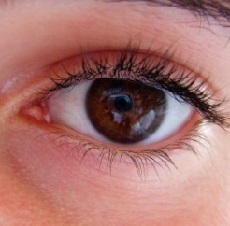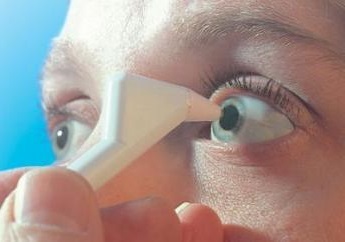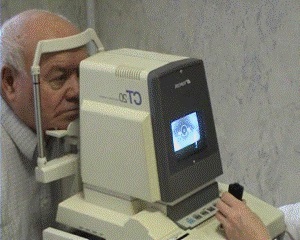 Intraocular called the pressure under which the eye fluid is located in the cavity of the eyeball. Ideally, IOP does not change, which forms stable physiological conditions for all structures of the eye. The normal pressure inside the eyes provides a normal level of microcirculation and metabolism in the eye tissues.
Intraocular called the pressure under which the eye fluid is located in the cavity of the eyeball. Ideally, IOP does not change, which forms stable physiological conditions for all structures of the eye. The normal pressure inside the eyes provides a normal level of microcirculation and metabolism in the eye tissues.
When the pressure decreases or rises, this creates a danger for the normal functioning of the visual apparatus. A persistent decrease in intraocular pressure is called hypotension, persistent high blood pressure is characteristic for the development of glaucoma.
Unfortunately, even today, in the age of developed medical technologies, many people can not boast that at least once in their life they checked the intraocular pressure. This behavior leads to the fact that approximately 50% of patients come to the doctor by the hearing late, when the possibilities of therapy are already very limited.
Intraocular pressure norm in adults
Intraocular pressure is usually measured in millimeters of mercury. Within a day, it can have different indicators. So, for example, in the daytime figures can be quite high, and in the evening drop. The difference, as a rule, does not exceed 3 mm Hg.
Normally, intraocular pressure in adults should be within 10-23 mm.gt;Art. This level of pressure allows you to maintain microcirculatory and metabolic processes in the eyes, and also maintains the normal optical properties of the retina.
Increased intraocular pressure
In ophthalmic practice, an increase in IOP is most often observed. The main clinical form of increased intraocular pressure is glaucoma.
The causes of this disease are:
- increased arteriolar tonus of the ciliary body;
- violation of innervation of the eye vessels by the optic nerve;
- violation of outflow of IOP on the helmet canal;
- high pressure in the scleral veins;
- anatomical defects in the structure of the eye chambers;
- inflammatory lesions of the iris and choroid of the eye - irites and uveitis.
In addition, the increased pressure inside the eye is of three types:
- Stable - IOP is constantly above normal. This pressure inside the eyes is the first sign of glaucoma.
- Labile - IOP increases periodically, and then again takes normal values.
- Transient - IOP increases once and has a short-term character, and then comes back to normal.
Increased ophthalmotonus may be caused by fluid retention in certain kidney diseases, heart failure. In addition, its cause is Basedova's disease( diffuse toxic goiter), hypothyroidism( thyroid disease), menopause in women, poisoning with certain medicines, chemicals, tumor processes and inflammatory eye diseases, eye trauma.
All of the above causes contribute to the periodic occurrence of increased intraocular pressure. If the disease lasts long enough, it can promote the development of glaucoma, which will require long and complex treatment.
Also a common complication of increased intraocular pressure is optic nerve atrophy. Most often, there is a general decrease in vision, up to its complete loss. The affected eye becomes blind. Sometimes, if only a part of the nervous beams is atrophied, the field of vision changes, and whole fragments may fall out of it.

Low eye pressure
Lower eye pressure is much less common, but it presents a much greater threat to the health of the eye. Causes of decreased intraocular pressure may include:
- surgical interventions;
- eye injury;
- undeveloped eyeball;
- retinal detachment;
- lowering of blood pressure;
- detachment of the choroid;
- underdevelopment of the eyeball.
In the absence of treatment, lowering the internal pressure of the eyes can lead to significant visual impairment. If there is atrophy of the eyeball, pathological disorders become irreversible. Symptoms of eye pressure
We list the symptoms of of increased intraocular pressure :
- Impaired twilight vision.
- The deterioration of vision is actively progressing.
- The field of view is significantly reduced.
- Eyes get tired too quickly.
- Redness of the eyes is observed.
- Intense headaches in the area of the supernumerary arches, eyes and temporal zone.
- Flies moths, or rainbow circles in front of your eyes when you look at the light.
- Discomfort when reading, watching TV or working on a computer.
Now more about the manifestations of lowered intraocular pressure .They are not as obvious and noticeable as when they are raised. Often a person does not notice the changes at all and only after a year or several years discovers that the vision has worsened. And yet, there are some possible symptoms that relate more to concomitant problems and pathologies that may allow one to suspect a decrease:
- Reducing visual acuity;
- Visible dryness of the cornea and sclera;
- Reducing the density of the eyeball by touch;
- Eye of the eyeball in the eye socket.
In the absence of medical correction, this condition can cause subatrophy of the eye and complete loss of vision.
How is the measurement of intraocular pressure
Prophylactic testing of intraocular pressure is recommended if necessary, as well as individuals over 40 years of age every three years.
The specialist can measure intraocular pressure without using any apparatus. This method is called palpation. The person looks down, covering his eyes for centuries, and the doctor presses his fingers on the upper eyelids. So the doctor checks the density of the eyes, and also compares their density. The fact is that in this way you can also diagnose the primary glaucoma, in which the pressure in the eyes differs.
For a more accurate diagnosis of intraocular pressure, a tonometer is used. During the procedure, special colored weights are applied to the center of the patient's cornea, the imprint of which is later measured and deciphered. In order for the procedure to be painless, the patient is given a local anesthetic. The norm of intraocular pressure for each device is different. If the procedure is carried out with the help of the Maklakov tonometer, the norm of intraocular pressure is up to 24 mm.gt;The normal parameters of a pneumotonometer are in the range of 15-16 mm.gt;Art.

Diagnostics
To understand how to treat intraocular pressure, a doctor should not simply diagnose it, but also determine the cause of its development.
The ophthalmologist deals with the diagnosis and treatment of conditions associated with increased or decreased intraocular pressure.
In parallel, depending on the cause of the violations, consultations of the following doctors can be scheduled:
- therapist;
- neurologist and neurosurgeon;
- traumatologist;
- cardiologist;
- endocrinologist;
- nephrologist.
The doctor will ask the patient in detail about his symptoms and then inspect the fundus. If appropriate indications are available, the patient will be sent to the procedure for measuring intraocular pressure.
Treatment of intraocular pressure
The choice of treatment tactics depends on the cause that caused a decrease or increase in intraocular pressure in an adult.
With , increased intraocular pressure , the following conservative measures may be used as treatment:
- Drops that improve the nutrition of the eye tissues and fluid outflow.
- Treatment of the underlying disease if increased intraocular pressure is symptomatic.
- In case of ineffectiveness of medical methods, laser treatment is used.
This is what can be done with decrease in intraocular pressure :
- Oxygen therapy( use of oxygen).Injection of vitamin B1.
- Drops based on atropine sulfate.
- Injections( subconjunctival) of atropine sulfate, dexamethasone or sodium chloride solution.
In general, the treatment of decreased intraocular pressure is to treat the underlying disease, which has led to a disruption.
The most radical method of treatment of intraocular pressure is microsurgical technologies: goniotomy combined with or without goniopuncture, as well as trabeculotomy. With goniotomy, the iris-corneal angle of the anterior chamber of the eye is dissected. Trabeculotomy, in turn, is a dissection of the trabecular mesh of the eye - a tissue connecting the ciliary edge of the iris to the posterior plane of the cornea.
Prevention
To avoid discomfort in the eye, you must avoid stress and fatigue. If you need a lot of time to spend in front of the screen of the monitor, you should do five-minute breaks every hour. Closing my eyes, I need to massage my eyelids and walk around the room.
. Nutrition is also important. Products should be fresh and useful, it is worth to avoid those products that can lead to the accumulation of cholesterol. In the autumn and winter it is advisable to drink vitamins.

How to choose probiotics for the intestines: a list of drugs.

Effective and inexpensive cough syrups for children and adults.

Modern non-steroidal anti-inflammatory drugs.

Review of tablets from the increased pressure of the new generation.
 Antiviral drugs are inexpensive and effective.
Antiviral drugs are inexpensive and effective.



